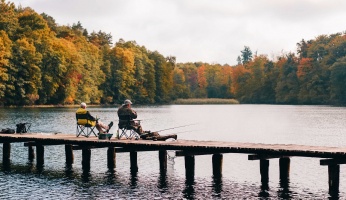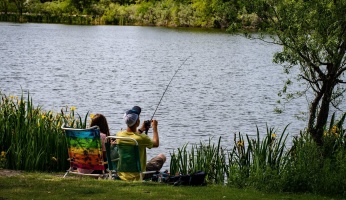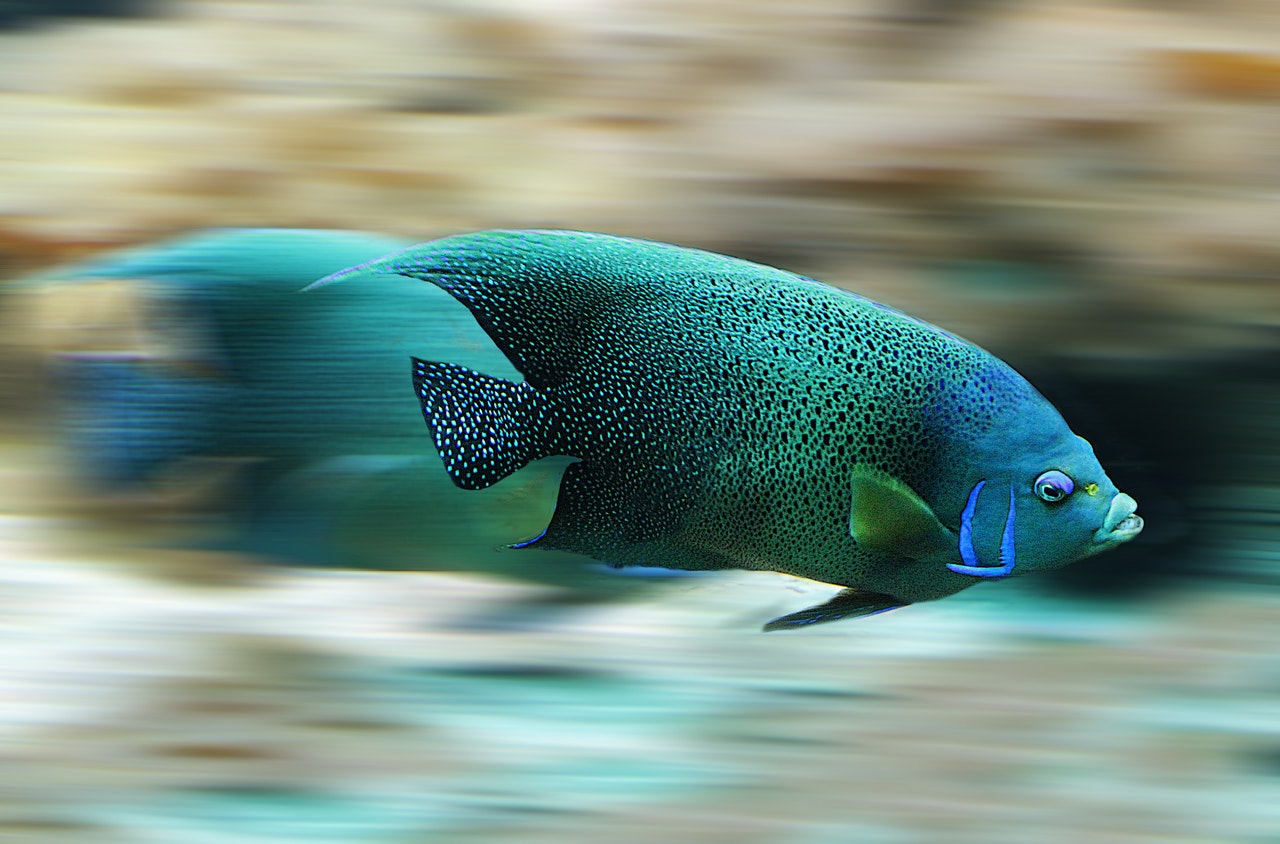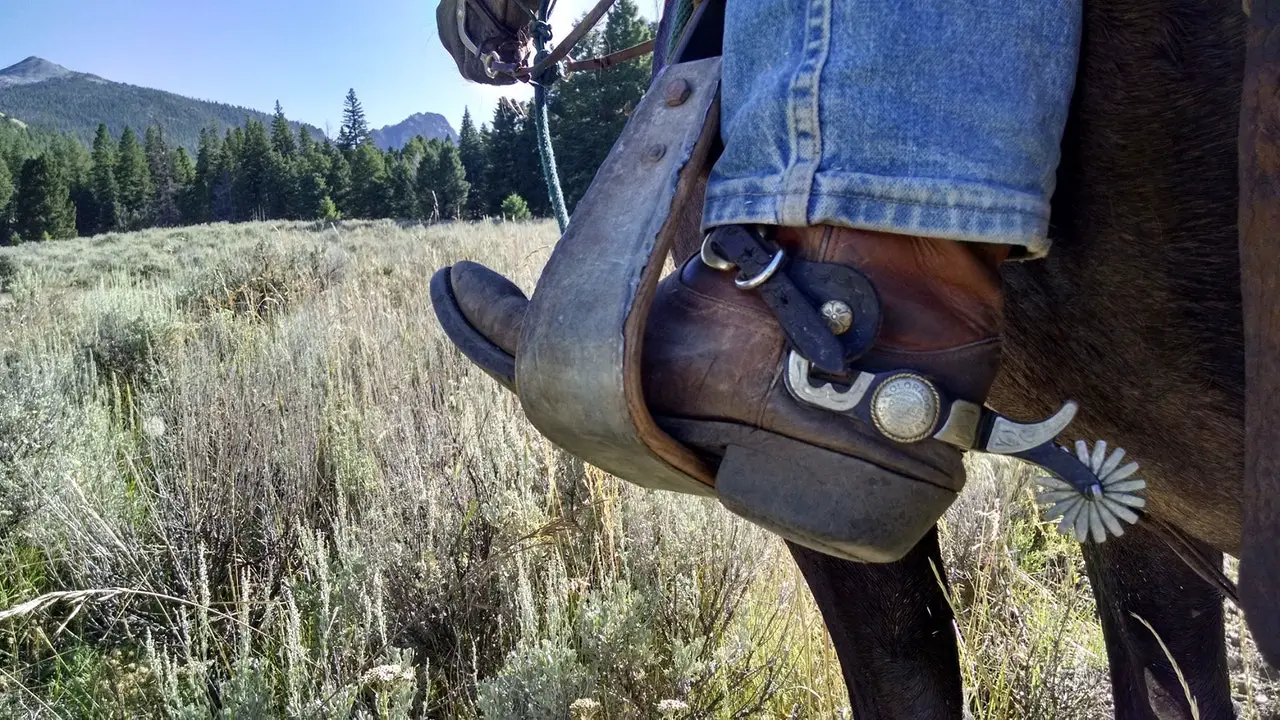River Fishing: Tips for the Beginner
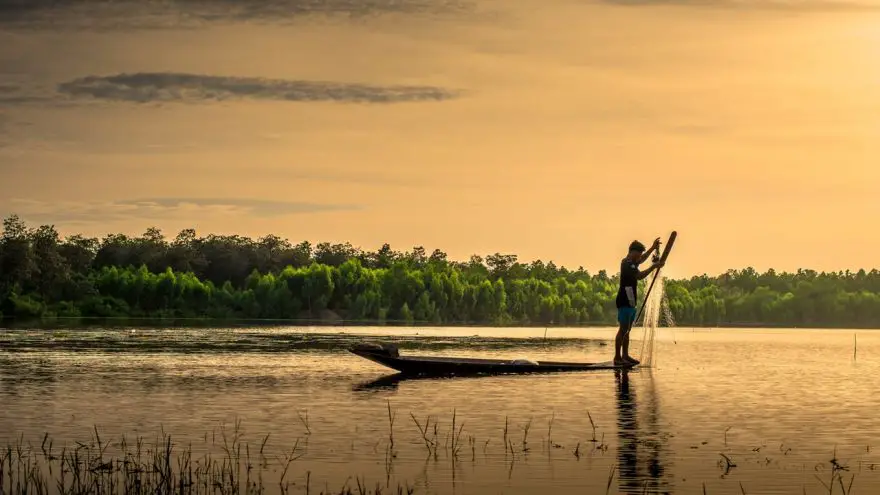 River Fishing: Tips for the Beginner
thegearhunt.com
River Fishing: Tips for the Beginner
thegearhunt.com
Rivers are defined as watercourses that flow naturally, are unidirectional, and continuously change with the passing of time. Because of the nature of creeks, streams, and rivers, the strategies that are needed in order to successfully fish in them can be a bit more technical since you have to take into account things like flow and current rates, both within specific areas of the river and overall, e.g. riverbeds vs. banks, and also because snags are more frequent because of things like logs and fallen trees and the constant movement of the current.
This means that you’ll need more accuracy when you cast, and that minor modifications must also be necessary, and they will depend on the current conditions.
With all of this and more to take into account, we have put together this guide containing some of the best tips for fishing in rivers so that you’ll be able to increase the chances of you catching fish in creeks, streams, and rivers.
Necessary Equipment
The type of fish you are looking to catch can have a large impact on the equipment that might be necessary.
That being said, the following list of equipment will be enough to get you started fishing.
Rod. This equipment can vary depending on the weight you’ll want to hold and to work with when you’re using the pump and reel technique when it comes time to reel your catch in. It is also critical to think about the weight of your rod. A lighter rod will make it easier to detect bites and some people find it a bit more enjoyable to use gear that is lighter.
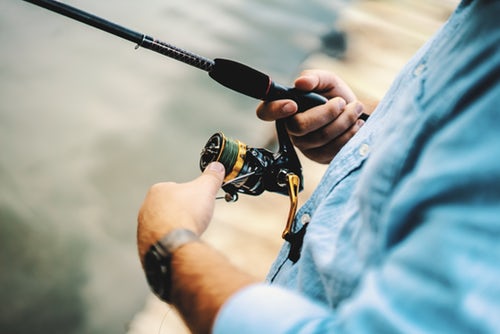 Reel. This also adds to the weight of your rod, so carefully consider what you’ll be able to work with. Also, take into consideration the fact that bigger fish can easily break rods and reels that aren’t built for their weight. Also, if you’ll be leaving your rod in a rod holder on your boat as opposed to keeping it in your hands, you might want a reel that will make a bit of noise when your bait is taken.
Reel. This also adds to the weight of your rod, so carefully consider what you’ll be able to work with. Also, take into consideration the fact that bigger fish can easily break rods and reels that aren’t built for their weight. Also, if you’ll be leaving your rod in a rod holder on your boat as opposed to keeping it in your hands, you might want a reel that will make a bit of noise when your bait is taken.
Line. Typically, for river fishing you’ll want something a bit lighter because fish that are found in streams and rivers tend to be a bit smaller than those in dams and lakes. That said, bigger target fish will always need bigger line. Lines that are lighter are also more difficult to see when they’re in the water, which is something else to take into account when it comes to not scaring fish away from the bait.
Hooks. Stay away from hooks that are too small, or anything that might become stuck in the throat of the fish because removing it will more than likely kill the fish. Hooks with a wide gap will be more likely to catch in the mouth of the fish. Also, ensure that your hooks are sharp. If you are going to be catching and releasing, you might even want to use barbless hooks that will reduce the amount of trauma and injury to the fish.
Fly, Lure, and/or bait. What you choose here will depend on where you will be fishing and what you are fishing for. It’s always best to use local bait. Lures that look like local prey will also be good so that the fish you will be looking to hook will be able to recognize it.
Waders. These are useful for when you’re fishing in small streams and rivers while not in a boat and so that you don’t get wet.
Bobbers. These allow you to see when fish bite because they’ll dip under the water’s surface. They are typically bright colors so that they are easier to see.
Sinkers. When rivers flow, just your line and bait won’t be heavy enough to get the bait close to the bottom where the fish will more than likely be. Sinkers will make sure that your line has the weight it needs to sink.
Pliers. There will be times when you won’t be able to free a hook from a fish’s mouth just by using your fingers. Also, these might occasionally be necessary to get hooks out of you.
Line cutter. When it comes to fishing in bodies of water that are constantly moving, it can be easy to get your line snagged on debris on the bottom. When this happens, you’ll need something to cut it.
Tackle box. You will need this to keep all of your gear aside from the rod and reel in one place and make it easier to carry.
Profile of the River
Fishing in rivers might not seem to be too much different from fishing in other types of water. That said, there are a few different things that you’ll need to take into account.
Movement
The water in the ocean can be quite a bit deeper and different levels of water will often have different currents. If you are fishing from a beach, you’ll have the back and forth movement of the waves. Alternatively, dam or lake fishing will have very little motion to account for. Fishing in a river will have more movement to account for than that of a dam or lake, and unlike ocean water, it will be unidirectional.
Shape
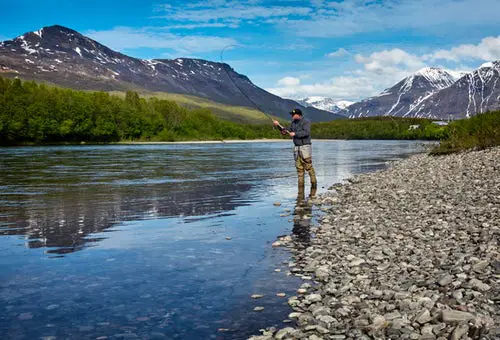 Depending on geological features, width, and depth, the rate of the flow of the water can change with the progression of the river. At narrow points, the water can bottle-neck and this serves to increase the energy of it. In areas that are wider, the energy of the water will be reduced. If it is a straight running river, it has the opportunity to build up a bit of speed, while rivers that meander quite a bit will have a reduced rate of flow.
Depending on geological features, width, and depth, the rate of the flow of the water can change with the progression of the river. At narrow points, the water can bottle-neck and this serves to increase the energy of it. In areas that are wider, the energy of the water will be reduced. If it is a straight running river, it has the opportunity to build up a bit of speed, while rivers that meander quite a bit will have a reduced rate of flow.
Things like rises in the landscape, falls, and rocks will also change how the water acts. They can make it even more turbulent. On the other hand, if there is a lack of these things, the river will be calmer. All of these things create their own micro habitats within the system.
Putting it Together
Determining the turbulence and flow of a river can give you more of an understanding of the behavior and pattern, and this is critical when it comes to determining where most of the fish will be, especially when you are fishing for a specific species. Each river is different. Fish that live in rivers deal with habitats that have a lot of energy, so the duration and speed that the species in question can maintain will determine where you’ll be more likely to find the fish you are after.
Finding the Fish
Hiding and Resting Areas
Fish move constantly in response to the environment they live in. Because of this, they tend to expend a LOT of energy. This means that most of the time, the fish will be easier to find in areas of the river that are slower moving and calmer because it allows them to expend less energy. Fish might choose to congregate around things like the bottom of the river, banks, weeds, plants, and other types of underwater formations that will slow down the flow of the water. This can include things like whirlpools, eddies, where currents converge, backwaters, sunken logs, and islands.
Fish tend to only leave these currents that are slow moving when they need to feed or change locations. When you consider this, you will be able to figure out that aiming for spots that are full of dense plants or weeds, casting right along the bank, or even bouncing the bait on the riverbed will be more likely to catch that fish you are looking for.
Feeding Areas
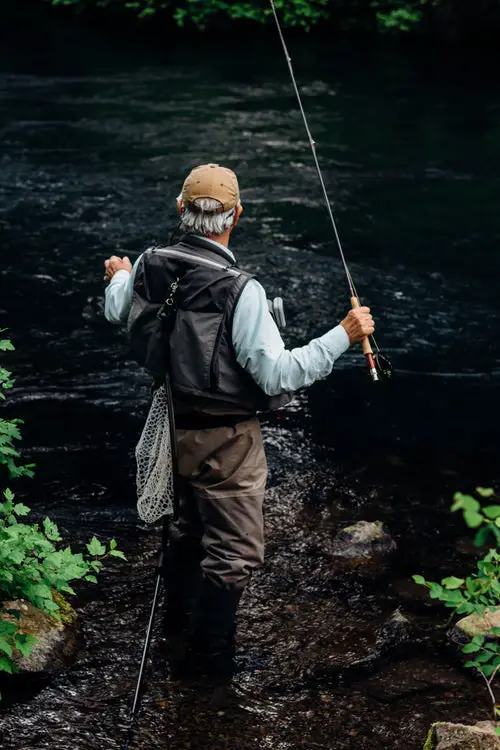 You might also opt to target fish while they’re feeding. Fish food tends to collect in patches of foam, and can typically be found around logs, trees, and rocks that are submerged. There is also quite a bit of food that passes right over spillways in rivers that are larger, so the fish can congregate here so that they will have a chance to feed before the food goes over. You should also pay close attention to any birds that are feeding right on the river. They might hover over schools of baitfish. These baitfish will also draw larger game fish, so areas, where birds are hovering, can be good places to cast.
You might also opt to target fish while they’re feeding. Fish food tends to collect in patches of foam, and can typically be found around logs, trees, and rocks that are submerged. There is also quite a bit of food that passes right over spillways in rivers that are larger, so the fish can congregate here so that they will have a chance to feed before the food goes over. You should also pay close attention to any birds that are feeding right on the river. They might hover over schools of baitfish. These baitfish will also draw larger game fish, so areas, where birds are hovering, can be good places to cast.
It can also be good to know the feeding habits of your target fish, such as – where it might feed or how far it might travel for food. This can help you when it comes to determining the best techniques and strategy to use.
Factors in the Weather
When it comes to finding fish, weather will also need to be considered. When it rains, the drops of water can catch insects while they are falling and then drop them right on the top of the water. Some fish use this as a chance to come right up to the surface so that they can feed. The raindrops on the water will also work to break up what the fish are able to see above the water, and this will make them less likely to spot you.
During weather that is warmer, the fish tend to be sluggish and slower. When you find them, you might need to slow your fishing technique so that they will be more likely to find interest in what you are casting. Weather that is windy can mean that your cast goes farther. Allowing you to cover even more area and increasing your chances of success.
Polarized Sunglasses
One other way to find the fish is to simply look for them. It is easier to do this when the water is clear and doesn’t have too much sediment. This means that your best options for this are in calmer waters and waters that are a bit shallower.
Having a pair of sunglasses that are polarized can assist with this due to the fact that they cut the glare from the water down and can help you see below the surface when there isn’t too much sediment. This can reduce the time you spend searching for the fish but remember that you need to be careful so that you don’t spook the fish.
Fishing Techniques
When it comes to fishing in rivers, there are a few techniques that you have to choose from.
Crosscurrent Fishing
This is a great method for fishing in streams and rivers because it allows you to cover a large area. You will cast upstream, aiming for an area of slow-moving water and then allow the current to carry your bait downstream.
This technique doesn’t just involve one cast though. You should cast several times with a variety of modifications in the distance you cast and the distance at which you retrieve your line so that you can cover the area thoroughly.
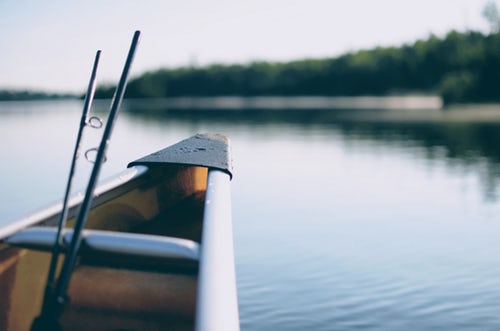
Upstream Fishing
When the fish aren’t leaving the areas of slow flow to feed but instead face upstream and allow the current to carry their food right to them, this technique will be beneficial. It also won’t allow the fish to spot you because their backs will be towards you. Just cast your line upstream to the area where you think there might be fish. This might be a collection of fallen trees or boulders in the center of the river. Then, just retrieve your line as it floats back to you.
Downstream Fishing
This one isn’t the most favorable technique because it will allow the fish to see you and you will be more apt to disturb them. Also, when the current is heavier, a larger weight will be needed in order to keep your bait on the riverbed. That said, it will also make it more likely for your line to be snagged. To use this technique, just keep your rod low as you cast across the river and then retrieve it when it is downstream from you.
Some of the fish might be a bit more active when there is quite a bit of sediment stirred up. Murky conditions such as these mean that the fish might let down their guard due to the low visibility and will not be as likely to remain hiding from you.
Additionally, when the sediment on a riverbed is stirred up, it can bring up many small crustaceans and other types of food for the fish. If you are able to spot these critters in the shallows, bigger fish are likely not far off.
Local Knowledge
It’s always a good idea to have a conversation with the locals – whether it’s the local bait shop owner, in forums online, or other people fishing in the area. These people will be quite knowledgeable when it comes to the streams or rivers you want to fish in and will be able to give the best advice when it comes to the moon cycle, time of day, and best locations, as well as what weather conditions will be best.
Ice Fishing
Winter is a time of year that’s harsh for all species and when things begin to freeze over, food tends to become scarce. Rivers heavily rely on nutrients in the ground as the foundation of their food chain. In the colder months, when the landscape and the rivers freeze, this can and does cut off the river ecosystem’s major resources. Because of this, fish that are under the ice can become extremely hungry. This means that ice fishing can be quite productive.
That being said, you still need to know where to look for the fish. All of the same rules still apply with regards to the current, food, etc. but you need to know before you head out because all of this will be under the ice and you won’t have the ability to see it once you get there.
Urbanized and Urban Fishing
 Fishing in rivers can at times carry a bad rep due to the quality of the water – especially in areas that are more heavily populated. Pollution will be more likely because of the runoff of stormwater. In cases like these, you need to check with the local and state agencies and advisories if you will want to eat whatever you catch. Aside from that, recreational fishing should be fine, but you might not catch too much depending on how contaminated the water is and the hardiness or resilience of the species that live in it.
Fishing in rivers can at times carry a bad rep due to the quality of the water – especially in areas that are more heavily populated. Pollution will be more likely because of the runoff of stormwater. In cases like these, you need to check with the local and state agencies and advisories if you will want to eat whatever you catch. Aside from that, recreational fishing should be fine, but you might not catch too much depending on how contaminated the water is and the hardiness or resilience of the species that live in it.
You should also know that in certain areas, some species will be considered pests, and catch and release might not be an option.
Some rivers, even some that aren’t in urban areas, are affected by humans in a variety of ways, such as those with the regulation of flow through dams, weirs, and locks. Devices such as these can stop, slow down, or regulate the water’s flow and the water that does get through can alter the entire structure of the river ecosystem’s food chain. Structures like these can change the temperature and depth of the water and the reduction of flow means that the fish will be more apt to congregate near them.
Keeping What You Catch
If you are planning on keeping whatever you catch, you first need to check with the state or local authority with regard to catch limits and size regulations along with any specific regulations for individual species. Another necessity will be any fishing licenses you’ll need before you head out. It’s also a good idea to be up to date with regard to the code of conduct for the ethical treatment in order to reduce any trauma or stress to the species that you are looking to catch and eat.
Remember to only ever take what you need as opposed to always attempting to catch your limit to avoid any waste that isn’t necessary and to ensure future stock in the area.
River Fishing Tactics & Tips
You should be aware that certain species will be native to specific areas. If you are going to fish in specific areas, you’ll need to know what species you might be dealing with. This will help when you are choosing your bait. As an example, the ideal bait for trout won’t be too successful if you are fishing in an area where there is an abundance of largemouth bass.
If you are aware of your target species, you will be able to select the ideal bait. You can use plastic baits or live bait. Plastic bait works well for smallmouth bass and live bait is great for minnow and crawfish.
An Enjoyable Hobby
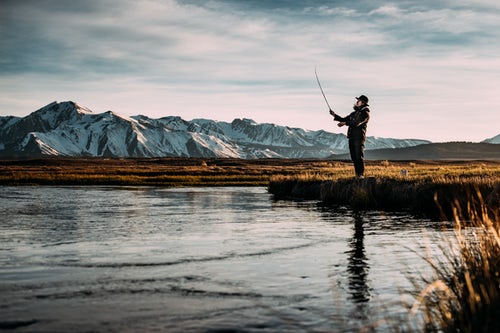 If you fish as a hobby, it can be quite enjoyable. It can help you relax and enjoy a day out with friends. And for those who have both the patience and the time to fish for hours, you have all of that time to use as you wish.
If you fish as a hobby, it can be quite enjoyable. It can help you relax and enjoy a day out with friends. And for those who have both the patience and the time to fish for hours, you have all of that time to use as you wish.
Remember that you can’t fish in a river commercially. First of all, the local and state authorities won’t allow it and secondly, a single person with a rod or two simply can’t achieve the numbers that commercial fishing requires. Seas and oceans are much better for that as long as you have the right transportation, equipment, and workforce.
Safety Tips
Safety always needs to be first, regardless of the activity. This includes fishing. If you’re certain that all of the proper safety measures are in place, you’ll enjoy fishing even more because your mind will be at peace.
One important thing to know is how to swim. If you don’t know how, you should always be wearing something like an inflatable life vest. If you’re going to be wading in the water, you’ll need to know just how deep it goes. You should also be wearing a wader belt and waders in the event of a fall.
Also, always ensure that you’ve read and will follow all of the various local regulations that concern security before planning your trip.
In Conclusion
If you’re going to be fishing in rivers, there are quite a few more considerations, strategies, and modifications that are necessary and because the fish live in an environment that is higher energy, they can fight harder than fish in dams and lakes.
Typically, it will be best to know the system of the river you’re going to fish in as well as the species you’re looking to catch so that you’ll be able to focus on learning about the various hiding, resting, and feeding places as well as how your target species behaves within the river system. That said, the tips you’ve read here today will give you a basic guide that you can apply to most of the river systems in order to ensure that your experience will be one that is enjoyable. The most critical thing to keep in mind is that you need to have patience. Fishing is something that takes both persistence and time to see results that are consistent.
Sources
- You Tube, How to Catch Catfish in a River – River Catfishing – Bank Fishing for Catfish
- Shop Karl’s, River Fishing Tips: How to Find Bass in Rivers
- Fishing Tips Depot, River Fishing Tips
- Take Me Fishing, River Fishing





